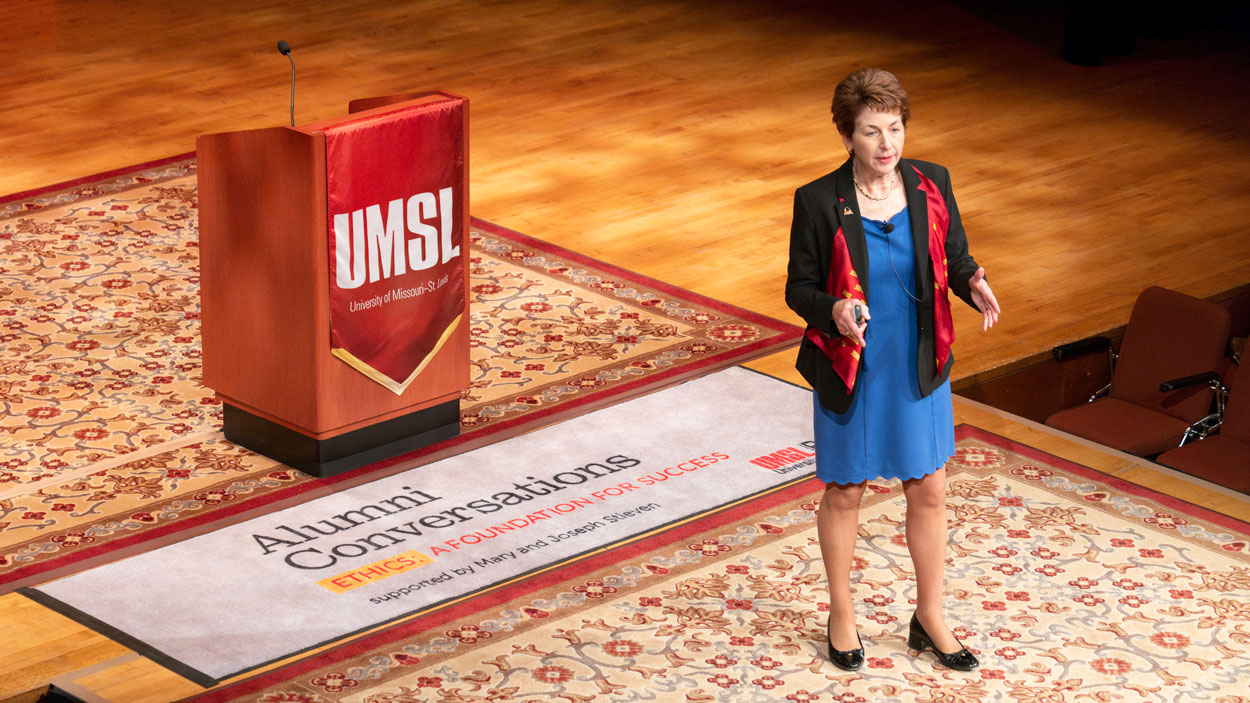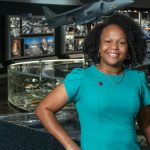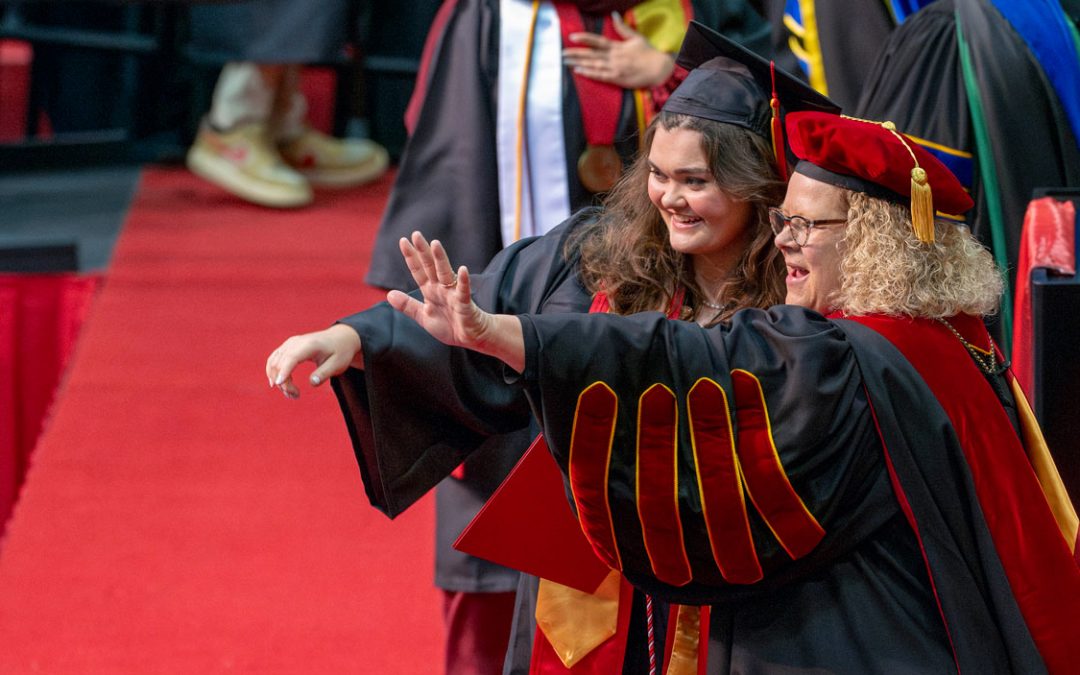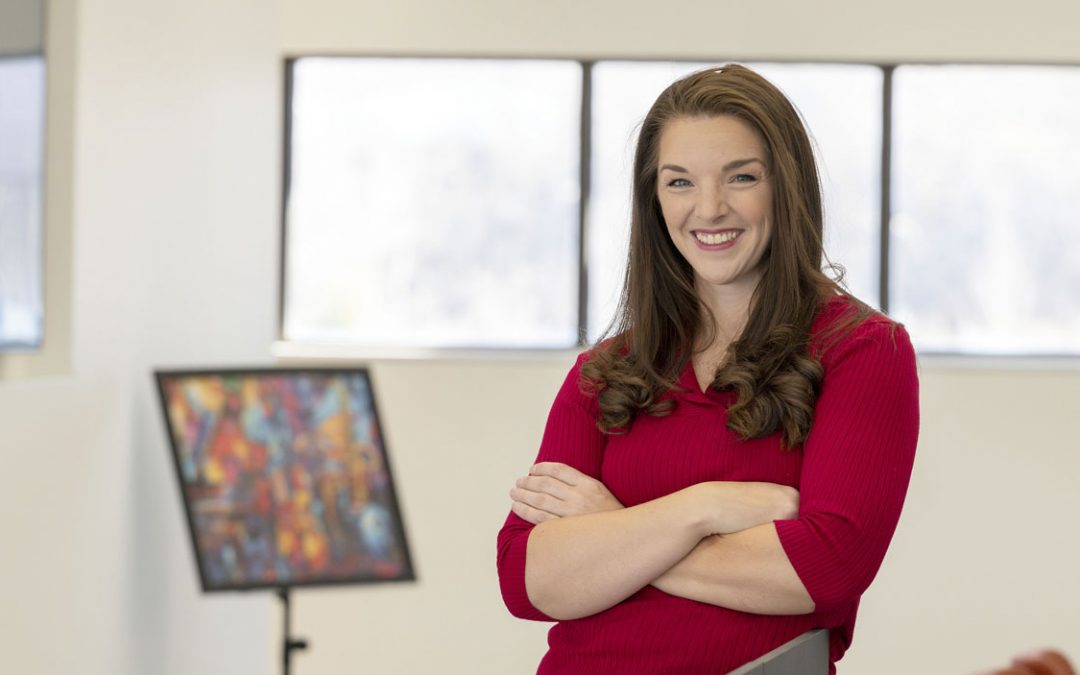
Alum Sandra Van Trease, who earned her accounting degree from UMSL in 1982, was one of six featured speakers for the alumni conversation series, “Ethics: A Foundation for Success.” (Photo by Derik Holtmann)
As part of its 2025 Annual Report, Directors & Boards magazine celebrated the 20th anniversary of one of the publication’s most respected and highly anticipated semiannual features – the release of the new batch of Directors To Watch.
Sandra Van Trease, a 1982 graduate of the University of Missouri–St. Louis who currently sits on the boards of five different organizations, was the first of 23 profiles in the section, which was dedicated to small and mid-cap companies.
“As we look ahead, Directors to Watch remains committed to honoring individuals who bring vision and accountability to the boardroom,” Editor in Chief of Directors & Boards Bill Hayes wrote in his introduction to the section. “If history is any indication, those profiled in years to come will continue to shape the governance landscape – not only meeting the moment but defining it.”
Two of the companies Van Trease currently serves on the board for – QuikTrip Corporation and Drury Development Corporation – took out full-page advertisements recognizing the accomplishment and thanking her for her contributions to their efforts.
Van Trease is an exceptionally worthy honoree.
After earning her accounting degree from UMSL, she started her career with 12 years at Price Waterhouse (now PwC), earning her CPA and CMA, along with her MBA from Washington University in St. Louis, while at the company. She moved into the health care space and held C-suite roles at RightChoice Managed Care and UniCare before becoming group president at BJC HealthCare, a position she held for nearly 16 years until retiring in 2020.
Retirement for Van Trease clearly didn’t mean sitting back and resting on her accomplishments. She strongly believes in giving back, both financially as a long-time UMSL donor and with her time and expertise. For example, Van Trease was one of the featured speakers for UMSL’s six-part alumni conversations series – “Ethics: A Foundation for Success” – that started in 2022.
Van Trease, who this month began her second term as member of the Chancellor’s Council, was recognized by the university with an honorary Doctor of Arts and Letters in 2004 and with the Distinguished Alumni Award in 2000, and she was also inducted into the UMSL Accounting Hall of Fame in 2015. The area outside Anheuser-Busch Hall, home to the Ed G. Smith College of Business, bears her name: the Van Trease Courtyard.
UMSL Daily recently caught up with Van Trease to chat about the Directors & Boards honor. (The interview has been edited for length and clarity.)
UMSL Daily: Why is it so important for you to be involved with UMSL?
SANDRA VAN TREASE: Well, I have great affection for the University of Missouri–St. Louis. Obviously, I spent a lot of time there and was involved as a student and have stayed connected through my professional career. It is such an important institution for our region, frankly, and I’m really excited to see it continue to do so well and flourish.
UD: You are being honored by Directors & Boards for your work as a board member. Why have you wanted to be involved with so many different companies and organizations after you retired from BJC?
VAN TREASE: One of the things that I think is really important for any organization, whether it’s a public company or private business or an educational institution, is for the leadership to work with the board to develop strategies for success. And to the extent board members have certain skill sets and experiences, I really do believe, based on my own personal experience in the C-suite, that outside board members are tremendous resources. They have experiences that they bring to the table to help formulate and stay on course with a given strategy.
I’ve always enjoyed it. I’ve done board work for a very long time, both as a C-suite executive on the board and being an independent board member. Governance is important, and access to those kinds of individuals with tremendous skills, experience and intellect is very, very valuable to an organization.
UD: You’re involved as a board member for so many different companies, and I’m curious what you’ve learned about the unique personalities that the boards and governing bodies have.
VAN TREASE: Every board, just like every organization, whether it’s a company or a school or civic or community organization, has a culture. One of the things I think that board members who are super effective do initially when they are asked to join the board, when they accept that opportunity, is to go in and listen for a bit. You can learn more about the culture of the company or the organization that you’re associated with, and you learn a little bit more about the board’s dynamics.
It’s like a team. It’s like a classroom. It’s like any kind of community. It has a culture, so learning what that is first is really important, and by doing so you figure out more quickly how your skill set and your experience can fit into that culture. And then you can figure out the best way you can go about making a difference.
UD: Do you remember your first experience as a board member, and how that shaped that approach you just talked about?
VAN TREASE: Yes, actually. My very first experience on a board was on a not-for-profit board. I was in my 20s, newly minted out of the University of Missouri–St. Louis and working with Price Waterhouse. I had the opportunity to join a not-for-profit board in the arts environment. It was very clear to me that I needed to listen and learn about people who are brilliantly artistic – which is not me – and figure out things like how they think and how they process, and where I could add value as someone with business training and that type of mindset.
It was evident early on that to help them do better, to accomplish their goals, I needed to understand more about how they approach their work, and what made sense to them and what didn’t. I couldn’t use exactly the same language in terms of the vernacular of business that I would in a different environment. So taking the time to really work within their structure and their interests, and not going too deep, too fast into the business things, that was really important. It was really good learning for me early on.
UD: When you think about the contributions you’ve had to different boards, are there some that stand out to you?
VAN TREASE: I’ve had some tremendous opportunities to work with different organizations. Working on something such as a transaction, let’s say with an organization that is going through an acquisition or a divestiture, and working with teams to make that happen, has been very interesting. Another one was an organization that was setting up a different business, creating a subsidiary, and then operating a business that’s not exactly the same as their core business. Programmatically, it was an area that I’m very familiar with, and so really spending deep-dive time with the management in helping them structure things that were going to be important to that different business, that’s been very rewarding and interesting.
And other things that are key to the role of a board member is to be someone that the C-suite – the CEO and the other C-level execs – can just bounce ideas off of in a safe environment. That kind of exchange when you’re building a strategy or you’re trying to solve a problem, that’s just something I have always found very exciting and interesting. It is often very difficult, but rewarding, nonetheless.
UD: I imagine each board has its own structure, like the different company cultures you mentioned earlier. Are there similar hierarchies or structures with each one?
VAN TREASE: Boards are different, particularly depending on what kind of organization we’re talking about. Often there’s a chair of the board. That chairperson can be an independent, but some boards have their executives, like their CEO or president, as the board chair. It’s not so much a hierarchy, but it’s more that a board chair is someone who does things like help develop the agenda. For example, what is the content for the meeting going to be?
And the board chair works with the CEO to ensure that the materials that get to the board members are consumable – not too detailed, not too high-level – and to ensure that there’s enough time for discussion. The chair is also responsible for the meeting itself being timely, not going over, but spending the right amount of time. And also encouraging everyone to speak, but not too much. Oftentimes, if it’s a larger organization, a board is going to have different subcommittees. They might have an audit committee, they might have a development committee, they might have a technology committee, depending on the needs of the organization.
UD: What types of boards are you on right now?
VAN TREASE: I have a public company board that I sit on right now, and two private company boards. I also sit on the board of a university and on the board of a civic organization. I also serve on a number of councils and other groups, but they’re not boards, per se.
UD: As follow up to that, how do you find time?
VAN TREASE: Well, I didn’t have all of that when I was a full-time executive at BJC. I joined the private company boards after I retired fully. So retirement, in my mind, is being able to manage your schedule in a different way than you did when you’re a fully employed person. But it’s really something I’ve always enjoyed, and to the extent that there’s value in my experiences, that’s really what I want to offer. But I make plenty of time for other things that I enjoy as well, especially for my family, friends and travel – it’s truly a joy to be able to do all these things!














